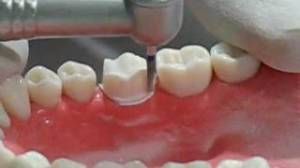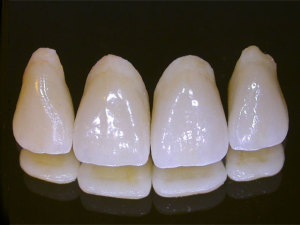By Arthur Kezian
About 75% of adults in the US experience fear of dentistry. Although this is a rough estimate, it is still a pretty high number. A lot of people seek dental care if and when they have a dental emergency. Let’s look at this logically; if you fear the dentist, why would you wait until you know you have a big problem that will involve a lot of dental work? Why not keep up with your dental visits and be cautious? This way, visiting the dentist will become a routine rather than a hassle. You and your dentist can make sure everything looks good in your mouth, always. If you check up on your teeth often, then you won’t need big work done, i.e. a fractured porcelain crown, extractions, root canals, or implants. But, what happens if you do need to get a crown done? Don’t fear the procedure; instead, try to understand the entire process to feel more comfortable.

Reasons for a Crown
- Some people might need to get a crown because they have a weak tooth and need to protect it from breaking. Another reason for getting a crown may be to save an already broken and worn down tooth.
- Sometimes patients have very large fillings where there is not enough tooth left; a crown would be needed in this case.
- Crowns can be used to make modifications to enhance your smile.
- Crowns may also be used to cover a dental implant as the last stage of an implant procedure.
- There are many different types of crowns including all porcelain, zirconia crowns, all-resin crowns, all metal crowns, or crowns with porcelain fused to metal. You and your dentist will decide together which option is best suitable for you.
First Appointment: Preparation of the Crown
Before beginning the procedure, your dentist will give you general anesthesia to numb the tooth and the gum around that tooth. After you are completely numb, your dentist will use a dental hand piece to file down your tooth giving the crown room to slip in like a glove. After your tooth has been reshaped, your dentist will take an impression of your teeth to make sure the crown fits accordingly to your bite. The impressions are then sent to a dental lab where the crown will be made. But, before you leave your first appointment, your dentist makes you a temporary crown using temporary cement to keep it in place. This crown will cover your tooth until your new, permanent crown is made.
Your dentist will advise you not to eat any sticky substances while your temporary crowns are on. Avoid gum, caramel, or toffee to make sure they don’t pull out your crown. Also try to stay away from very hard foods so that they don’t remove or break your temporary crown. Along with things you should be careful with eating, your dentist might also advise you on flossing techniques. When you have your temporary crown on it is best to put the floss in between the teeth and pull it through rather than pull it outward.

Second Appointment: Cementation
Your second appointment is a lot quicker than your first one because it does not involve drilling down your tooth. During this appointment your dentist will give you the general anesthesia again to make sure you are numb and do not feel any pain. The temporary crown is taken off and the new one is slipped on to see how it looks checking for the fit and the right color match. If everything looks fine, and you are happy with the outcome, then you are ready to have the crown permanently seated. If you and your dentist had decided on a crown that look esthetically pleasing and matched the shade of your teeth nicely, then you will either go home with porcelain or zirconia crowns and avoid getting a possible fractured porcelain crown.
After the appointment, you are given proper post-operative instructions and guidelines on taking care of your crown properly. Just like any other tooth, you must keep your crown clean as well. After a day or two, you can start flossing in between your porcelain crowns. It is best to make sure they are clean and don’t have any food particles in between them to prevent your gums from getting puffy and inflamed. If you have any questions regarding porcelain crowns or dental work in general, please feel free to contact Dr. Arthur A. Kezian. He and his staff will be ready to answer your questions and make sure you feel comfortable. As long as you know and understand what is going to be done to your teeth, there is no need to fear the dental work.
Dr. Arthur A. Kezian DDS 443 N. Larchmont Blvd Los Angeles, CA 90004 (323) 467-2777
